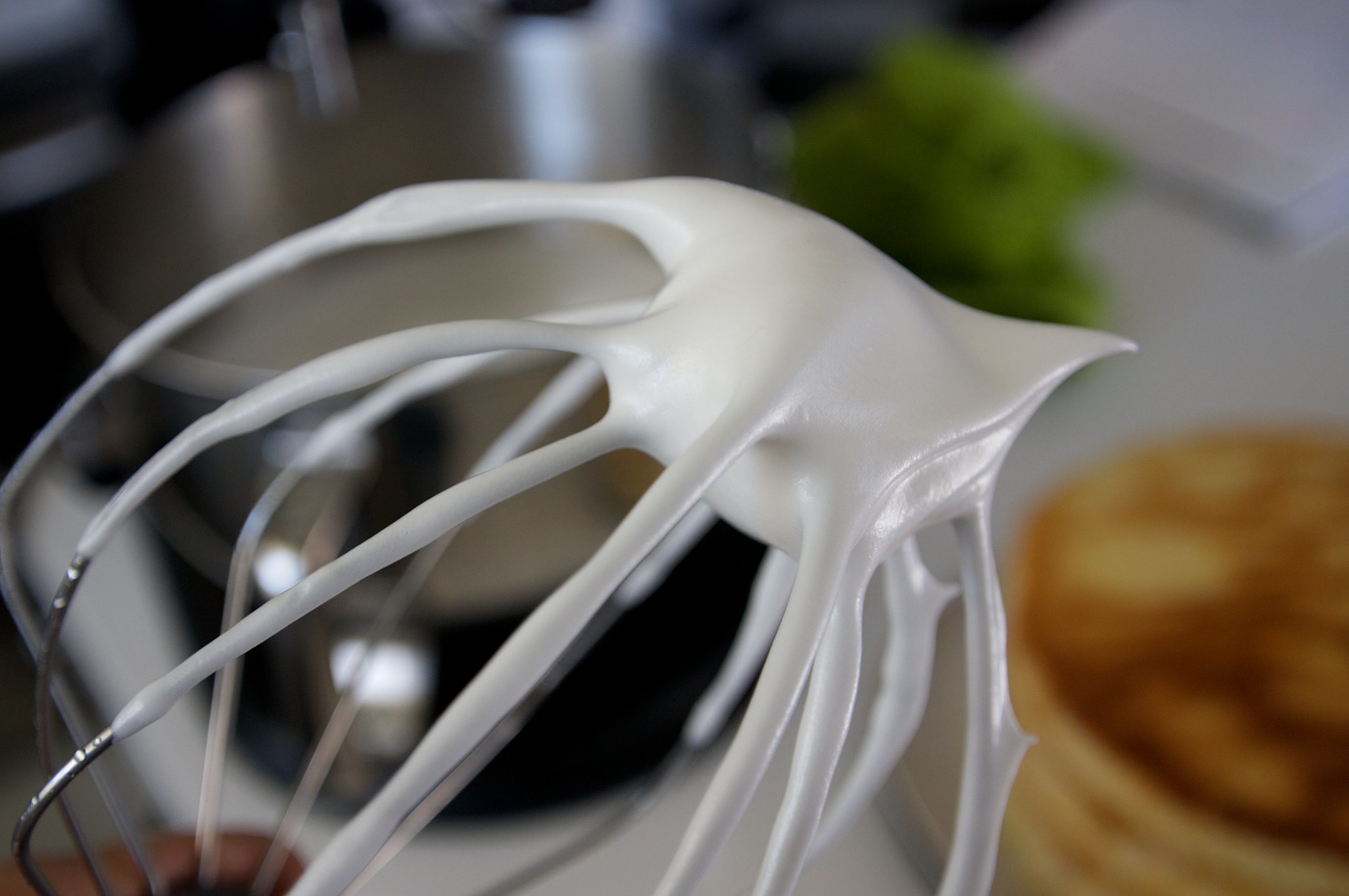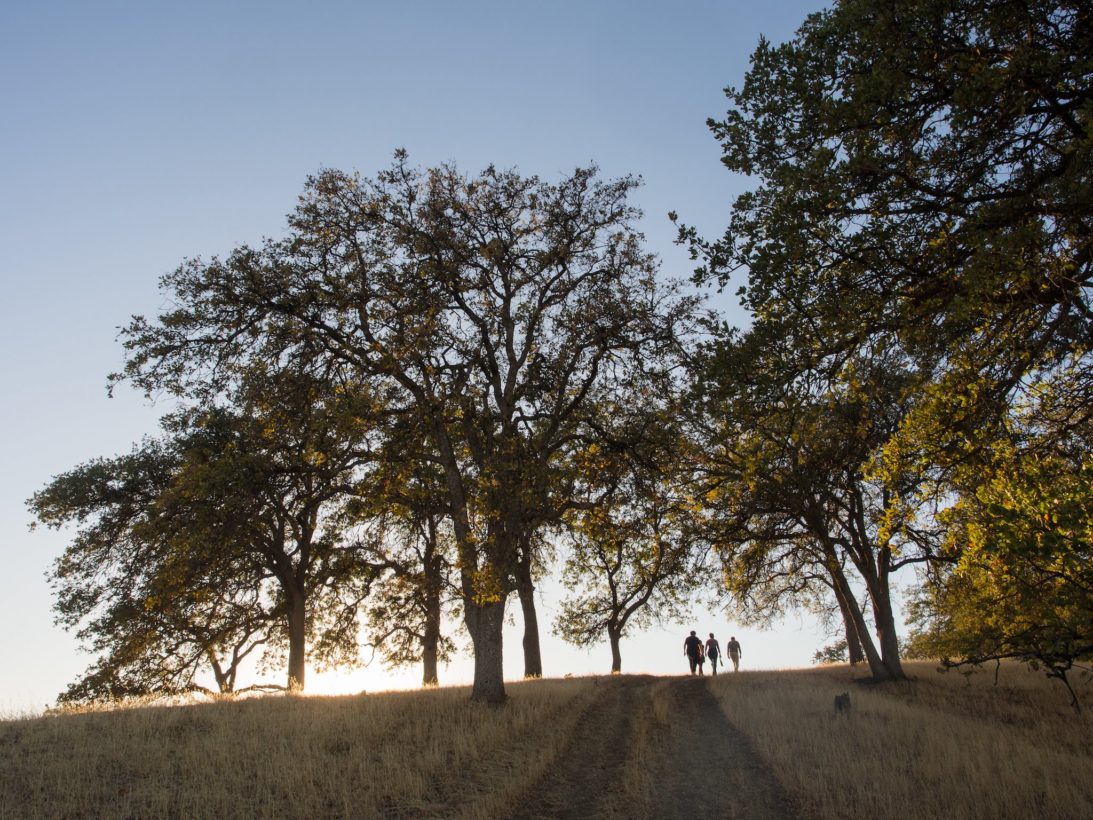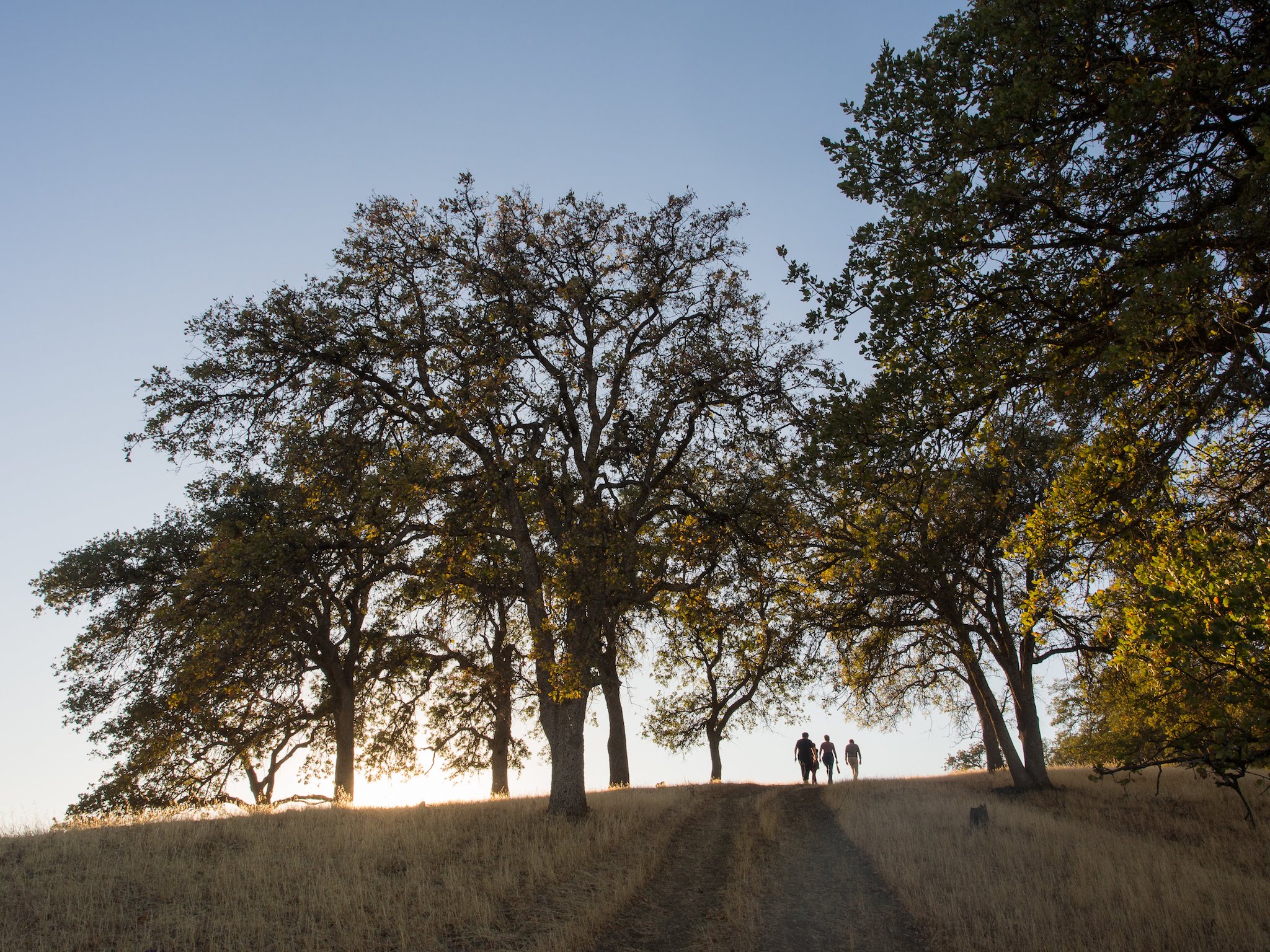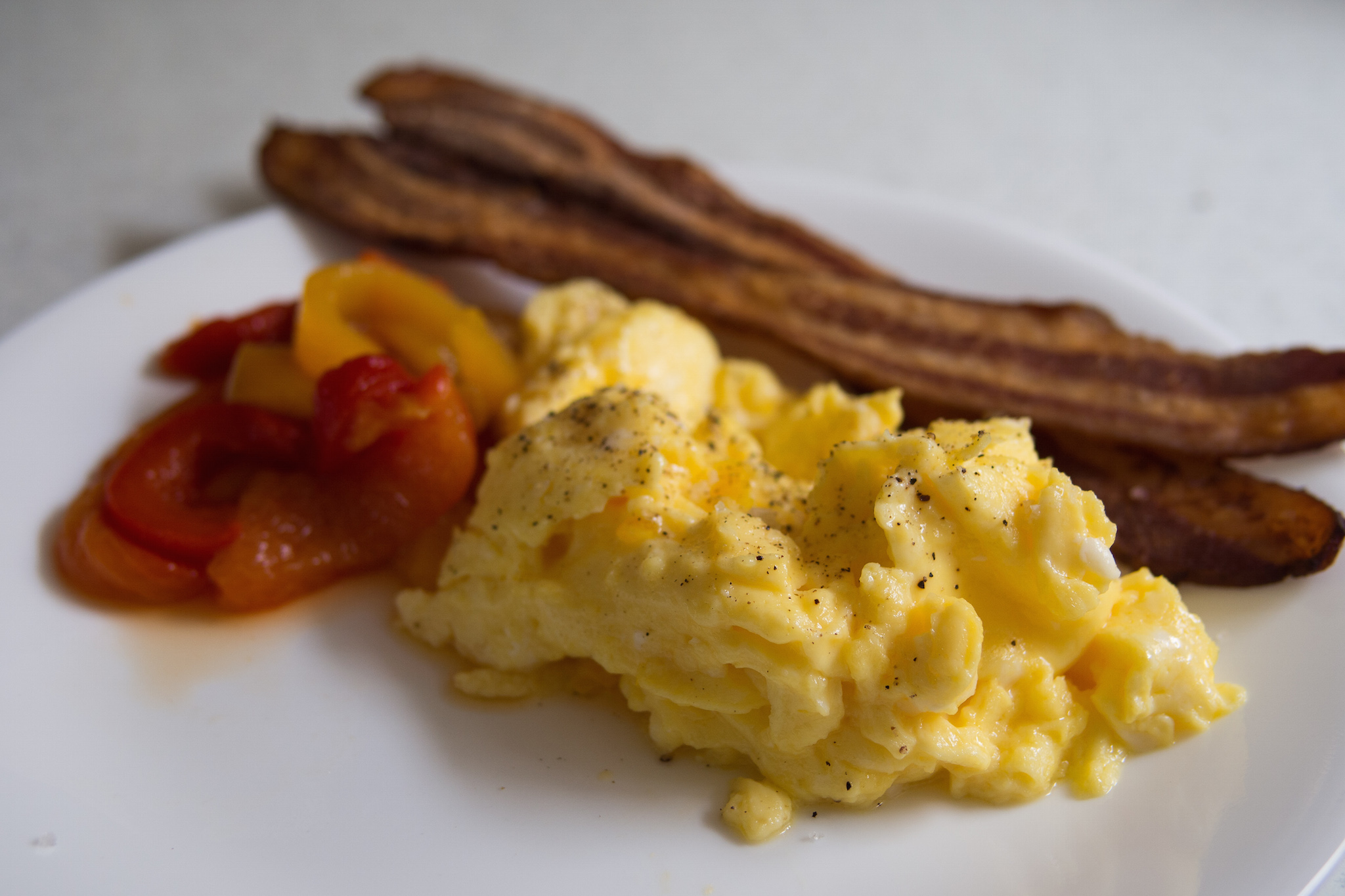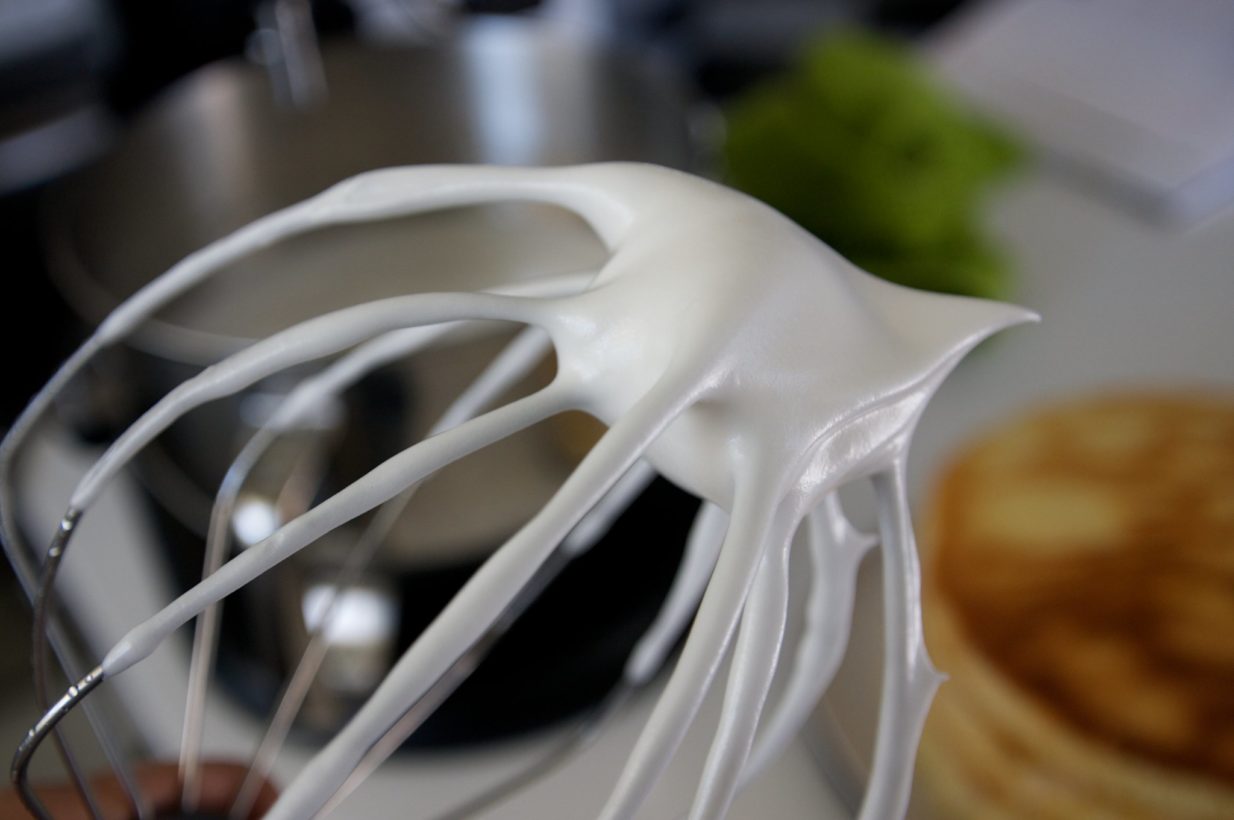
The summer after my junior year in college, I decided that it was finally time to learn how to cook. I had barely managed to feed myself in previous summers, largely subsisting on pasta and jarred sauce and also "pizza" made with slices of bread, cheese, and jarred sauce. (I ate a lot of jarred sauce.) I was able to survive, but I like to eat, so survival felt like too low of a bar.
Rather than start with something simple, I figured that if I could cook something difficult, I could cook anything. I decided that the hardest thing to cook was lemon meringue pie. I recruited my friends, Justin and Jay (who similarly enjoyed eating food and lacked competence in preparing it) to join me in this experiment. Miraculously, they were persuaded by my convoluted reasoning and enthusiastically agreed to participate.
Our first mistake was to search for a recipe on the Internet. This was in 1995. Recipes on the Internet weren't very good back then. Still, that was the least of our problems. The bigger problem was that we couldn't understand the recipe that we found. The crust required that we quickly roll slices of frozen butter and drops of water around in flour until they formed "marbles." The lemon custard required "tempering" eggs so that they cooked without scrambling.
Needless to say, we mostly got it wrong. Our crust barely held together and tasted like… well, it didn't taste like anything. Our lemon custard was actually lemony scrambled eggs — strangely compelling in their own way, but not good. At the very least, our results were edible and even resembled the bottom of a lemon meringue pie.
We could not say the same for the meringue. The recipe called for us to mix egg whites with cream of tartar and to whip them until they formed "stiff peaks." None of us knew what "stiff peaks" were, but we figured we'd know them when we saw them. None of us owned an electric mixer, much less a whisk, so we went to the store, bought a hand mixer, and proceeded to mix away.
And mix. And mix. One of us would mix until exhaustion, then another would take over and continue. We kept stopping to examine our results and debate whether we had achieved "stiff peaks." It didn't look very stiff, but we still had no idea what "stiff peaks" were, so we kept mixing. All told, we mixed for over an hour until finally giving up. My forearms were so tired, I could barely make a fist. We poured our runny egg whites over the custard, baked the darn thing, and celebrated over slices of glazed, scrambled egg and lemon pie.
The next day, we debriefed with a friend who knew how to cook and who somehow found our whole ordeal hilarious. She laughed heartily at most of our story, but paused in surprise when she heard about our failed meringue. "You mixed for over an hour?!" she remarked. "It shouldn't have taken that long, even by hand."
"How long should it have taken?" we asked.
"Five minutes, maybe ten," she responded.
We started speculating about why our meringue had failed, finally concluding that we should just buy an electric mixer and try again. We did, and this time, it worked. We all stood around the bowl and marveled, "So that's what a stiff peak looks like!"
What Do the Different Stages of Effective Collaboration Feel Like?
Last year, Amy Wu and I announced version 2.0 of our DIY Strategy / Culture toolkits. The following week, I spoke with my friend and colleague, June Kim, who had generously pored over our work and had lots of helpful feedback to share. He said, "You do a pretty good job of explaining how to use your toolkits, but you don't explain how it should feel and what it should look like when you're finished."
This hit a nerve. One of my core mantras is, "Chefs, not recipes." In a previous blog post explaining this principle, I wrote:
Recipes and tools have their place, but they are relatively meaningless without the literacy to wield and interpret them.
In a later blog post detailing the design philosophy underlying the toolkits, I confessed:
Initially, I was biased against tool development as a possible path to scale, largely because I felt that most people viewed tools as a silver bullet whose mere presence would magically make any group better. Even though this was the opposite of how I viewed tools, I didn’t want to unintentionally contribute to this problematic mindset, which I felt discouraged practice.
June's feedback felt like my worst fears come true. Without a clear sense of how it should feel to do strategy or culture work or what it looked like when done well, my toolkits would not be as effective as I wanted them to be for "cultivating chefs." I had written recipes that called for "stiff peaks" without explaining what they were or what the process of creating them should feel like. I swore I would fix this immediately.
Almost a year and a half later, I am happy to announce that… I am still at a loss as to how to do this.
My blog post about alignment was a first attempt, but more still needs to be done. I think my Good Goal-Setting Peer Coaching Workshop is also a step in the right direction. It exposes people to how others use the Goals + Success Spectrum, and it helps develop muscles around looking to peers for feedback, rather than biasing toward self-proclaimed experts. I’m in the process of designing similar offerings for other aspects of the work.
Still, I want to do better. The reason this bugs me so much is that I see groups going through collaborative processes all the time without really understanding how the outcomes are supposed to help them. Consequently, they end up blindly following a recipe, often at great expense, both in money and time. They think they've made lemon meringue pie, but they're actually eating glazed lemon and scrambled egg pie.
If people knew what the equivalent of lemon meringue pie actually looked and tasted like, this would simply be the beginning of a learning process. They'd be able to debrief and make adjustments, in the same way that me and my friends did when we were learning how to cook. But because many people don't, they just end up making and eating glazed lemon and scrambled egg pie over and over and over again. Most people sense that something is wrong, but because they don't know what right is, they keep doing the same things over and over again, hoping that the benefits will eventually present themselves.
The best way I know how to do this is to bring people along in my own work, encouraging them to "taste" along the way, pointing out when things feel right and wrong. It's how I learned, and I think we as a field can create many more opportunities for this. I think it's extremely important that all of us, as practitioners, take time to shadow others and create opportunities for others to shadow us. I continue to experiment with this.
A greater emphasis on storytelling is also critical, and I think that video is a particularly good and under-explored opportunity. If I were trying to learn how to make a lemon meringue pie today, a quick YouTube search would turn up hundreds of examples of what "stiff peaks" are and how to create them. What would be the equivalent videos for all things collaboration? What videos could we, as practitioners, easily make that would help the field understand what effective collaboration feels like? (Here's one of my early attempts.)
What do you think? Have you run across or created really good examples of what a good collaborative process feels like, with all of its ups and downs, be it strategy, culture, experimentation / innovation, or any other process? Please share in the comments below. Don’t feel shy about sharing your own work!
Photo by Tracy Benjamin. CC BY-NC-ND 2.0
